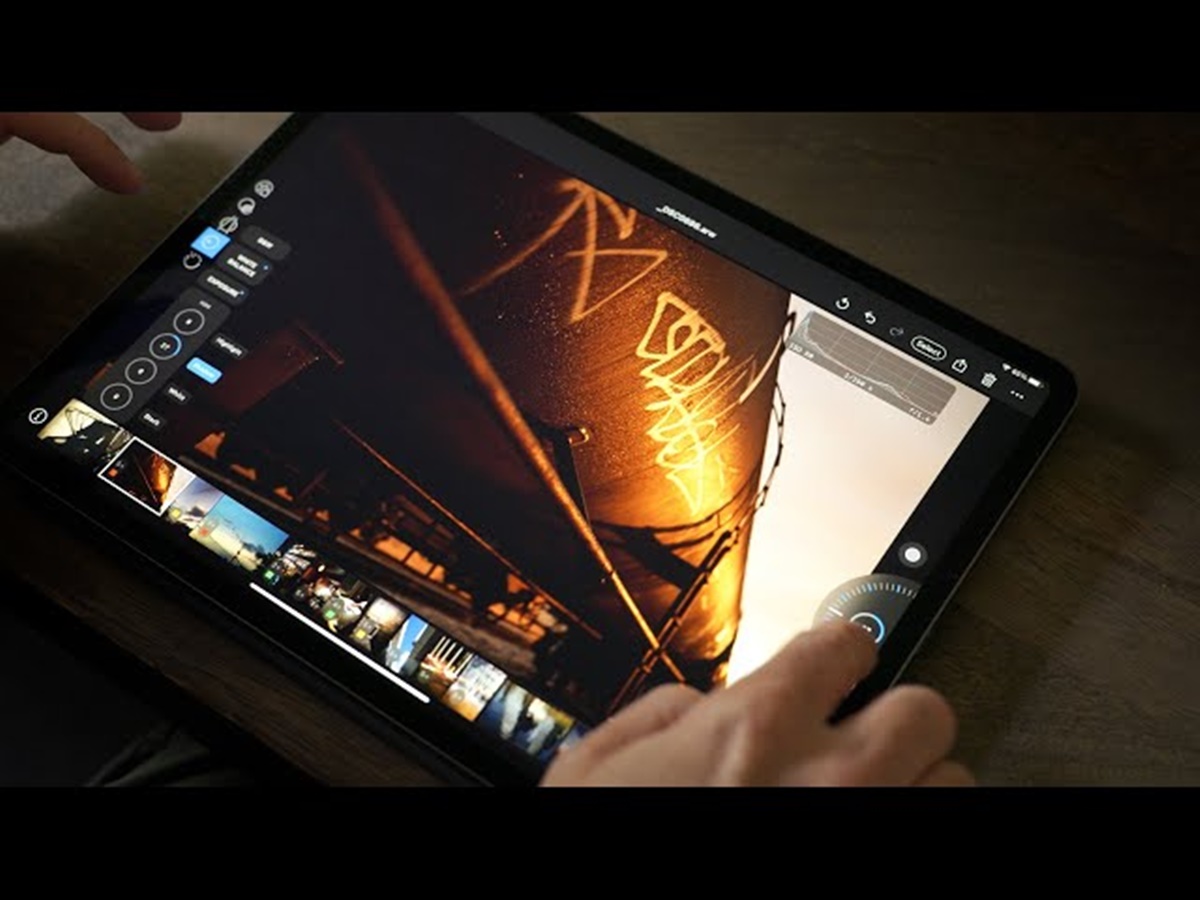The Limitations of the iPad Version
Capture One for iPad has been highly anticipated by photography enthusiasts and professionals alike, offering the convenience of mobile editing and the power of the renowned Capture One software. However, upon delving into the features and functionality of the iPad version, it becomes clear that there are several limitations that may disappoint or deter potential users.
One of the most significant limitations of the iPad version is its reduced capabilities compared to the desktop version. While it does provide basic editing tools such as exposure adjustments, white balance controls, and crop options, it lacks the advanced features that photographers rely on for intricate post-processing. This includes tools for local adjustments, layers, and fine-grained color grading.
Furthermore, the iPad version of Capture One does not support calibrated displays. This is a major drawback for professionals who rely on accurate color representation in their editing workflow. Without the ability to accurately view and adjust colors, the integrity of the final image may be compromised.
Another limitation of the iPad version is the absence of tethered shooting. Tethering, which allows photographers to directly connect their camera to a computer and view images in real-time, is a vital feature in many professional photography workflows. Unfortunately, this functionality is not available on the iPad version, limiting its usefulness in studio or location shoots.
Additionally, the iPad version of Capture One may result in a less efficient workflow compared to its desktop counterpart. While the touch interface of the iPad provides a unique and intuitive editing experience, it may not be as fast and streamlined as using a mouse and keyboard on a desktop computer. This can result in slower editing processes and potentially hinder productivity.
File storage and management is also limited in the iPad version of Capture One. The storage capabilities of the device may not be sufficient for photographers working with large RAW files or extensive image libraries. Additionally, the lack of advanced file organization features found in the desktop version can make it difficult to manage and access files efficiently.
Lastly, the iPad version of Capture One heavily relies on the desktop version for certain functionalities. While the iPad can be used as a companion device for remote editing and reviewing images, it still requires synchronizing with a desktop computer running Capture One for more advanced editing tasks. This dependence on the desktop version may inconvenience users who were hoping for a standalone editing solution on their iPad.
Despite its limitations, it is worth noting that the iPad version of Capture One comes with a high price tag. This may make it less appealing to casual photographers or those considering it as a secondary editing option for their existing workflow.
Limited Editing Features
While Capture One for iPad offers the convenience of editing on the go, one of its notable limitations lies in the realm of editing capabilities. Compared to the comprehensive feature set available in the desktop version, the editing tools in the iPad version are relatively limited.
Basic editing functions such as exposure adjustments, white balance controls, and crop options are available in the iPad version, allowing users to make essential tweaks to their images. However, many advanced features that photographers rely on for meticulous post-processing are absent.
Local adjustments, for example, are not available in the iPad version. These tools, which allow photographers to make specific edits to selected areas of an image, are essential for fine-tuning details, enhancing specific elements, or correcting imperfections. The absence of this feature in the iPad version may leave users feeling limited in their ability to achieve the desired level of precision and creativity in their edits.
Another prominent feature missing from the iPad version is the ability to work with layers. Layers provide photographers with greater control over their editing process by allowing them to apply adjustments selectively and non-destructively. The absence of layers in the iPad app can be particularly limiting when it comes to complex editing tasks or creative editing techniques.
Additionally, the iPad version of Capture One offers limited options for color grading. While basic color adjustment tools are available, the more advanced tools found in the desktop version, such as the powerful color editor, are not present. This limitation can restrict creative possibilities and hinder photographers who rely on nuanced color adjustments to achieve their desired aesthetic.
Furthermore, the iPad version lacks specific tools for lens corrections and perspective adjustments. These features are crucial for correcting distortion and improving the overall visual balance and composition of an image. The absence of these tools may hinder photographers who rely on precise lens adjustments to achieve the desired image quality.
While the limited editing features in the iPad version of Capture One may be sufficient for some casual editing needs or quick adjustments on the go, they fall short when it comes to more in-depth and intricate editing tasks. Photographers looking for a robust editing experience may find the iPad version lacking in the advanced tools they require to achieve their desired results.
Incompatibility with Calibrated Displays
One significant limitation of Capture One for iPad is its incompatibility with calibrated displays. For photographers who rely on accurate color representation in their editing workflow, this can be a major drawback.
Calibration is the process of adjusting the colors and tones of a display to match a known reference standard. It ensures that the colors you see on your screen are true and consistent, allowing for precise color editing and accurate representation of images. Many professional photographers invest in calibrating their displays to maintain color accuracy throughout the editing process.
Unfortunately, the iPad version of Capture One does not support calibrated displays. This means that any adjustments made to the colors and tones within the app may not accurately reflect how they will appear on a calibrated display. The lack of compatibility with calibrated displays can lead to inconsistencies in color rendering, potentially compromising the integrity of the final image.
Without the ability to accurately view and edit colors, photographers using the iPad version may find it challenging to achieve the desired color accuracy and reproduce the intended visual impact of their images. The inability to rely on a calibrated display can hinder precise color correction, accurate color grading, and overall color management within the editing process.
Furthermore, for photographers who work collaboratively or require consistency across multiple devices, the incompatibility with calibrated displays in the iPad version of Capture One can pose a significant challenge. Without consistent color representation across different devices, it becomes difficult to maintain color accuracy and ensure that the images appear as intended, regardless of the viewing platform.
While the iPad’s display itself may be of high quality and offer impressive color reproduction, the inability to support calibrated displays limits the level of precision and accuracy that professional photographers require in their editing workflow. It is important to consider this limitation when deciding whether to rely on the iPad version of Capture One for color-sensitive editing tasks.
Lack of Tethered Shooting
One notable limitation of Capture One for iPad is the lack of tethered shooting capabilities. Tethering, the process of connecting a camera directly to a computer or device for real-time image transfer and control, is a vital feature in many professional photography workflows.
Tethered shooting offers numerous benefits to photographers. It allows for a larger screen to view images, facilitating a more detailed assessment of composition, focus, and other essential elements. It also enables instant image transfer, saving time and ensuring efficient workflow during shoots.
Unfortunately, the iPad version of Capture One does not support tethered shooting. This means that photographers using the iPad version are unable to connect their cameras directly to the device for real-time image transfer and live viewing. The absence of this feature limits its usability in studio or location shoots where tethered shooting is a common practice.
Without tethered shooting, photographers using the iPad version may find it challenging to assess image quality and make necessary adjustments in real-time. The inability to view images on a larger screen and make immediate corrections can lead to missed opportunities and compromised image quality.
Tethered shooting also offers the advantage of remote control over camera settings. With the desktop version of Capture One, photographers can adjust camera settings directly from the software, making it easier to fine-tune exposure, focus, and other parameters without physically touching the camera. Unfortunately, this level of control is not available in the iPad version.
While the iPad’s touch interface provides a unique and intuitive editing experience, it does not offer the same level of control and precision as a mouse and keyboard setup. This limitation can hinder the efficiency and flexibility of the editing process, particularly for photographers who rely on quick and precise adjustments during shoots.
The lack of tethered shooting in the iPad version of Capture One may disappoint professional photographers who depend on this feature for their workflow. It is important to consider this limitation when deciding whether the iPad version is suitable for your specific photography needs.
Less Efficient Workflow
While Capture One for iPad offers the convenience of editing on a mobile device, one limitation that users may encounter is a less efficient workflow compared to the desktop version. While the touch interface of the iPad can provide a unique and intuitive editing experience, it may not be as fast and streamlined as using a mouse and keyboard on a desktop computer.
One area where the iPad version may hinder efficiency is the speed of editing. While the iPad is equipped with powerful processors, it may still lag behind the processing capabilities of a high-performance desktop computer. This can result in slower rendering times when applying adjustments or working with large files, potentially leading to frustration, especially for photographers who work with a high volume of images.
Additionally, the touch interface of the iPad may not offer the same level of precision and control as a mouse and keyboard setup. Editing with a touch interface can sometimes be imprecise and require more effort than using a mouse. This can make tasks such as selecting and fine-tuning adjustment controls more time-consuming and less efficient.
Furthermore, the layout and organization of the editing tools in the iPad version may differ from the desktop version, potentially leading to a learning curve for existing Capture One users. Users may need to familiarize themselves with the new user interface and location of tools, which can slow down the editing process initially.
Another aspect that can impact workflow efficiency is the limited multitasking capabilities of the iPad. While Apple has made improvements in recent years, the iPad still has some limitations when it comes to multitasking and switching between apps. This can be problematic for photographers who need to refer to reference materials, browse the web for inspiration, or multitask between Capture One and other apps seamlessly.
Furthermore, the iPad version may lack certain keyboard shortcuts and customizability options that are available in the desktop version. These shortcuts and customization features are designed to speed up the editing workflow and improve efficiency. The absence of these options on the iPad can result in a slower and less streamlined workflow, especially for users who have become accustomed to utilizing keyboard shortcuts and custom workflows in the desktop version of Capture One.
While the iPad version of Capture One offers mobility and flexibility, it’s important to consider the potential trade-off in terms of workflow efficiency. Photographers with demanding editing workflows may find that the iPad version of Capture One does not match the speed and efficiency of the desktop version.
Limited File Storage and Management
An important consideration when using Capture One for iPad is the limited file storage and management capabilities compared to the desktop version. While the iPad version allows for editing images, it may not offer the same level of file organization and storage options that professionals rely on.
First and foremost, the storage capacity of the iPad itself may be a limiting factor when working with large RAW files or extensive image libraries. The available storage on iPads tends to be more limited compared to desktop computers, which can restrict the number of files that can be stored directly on the device. This can be especially problematic for professional photographers who work with high-resolution files or regularly capture a large number of images.
In addition to limited storage space, the iPad version may lack certain file management features found in the desktop version. The ability to efficiently organize and sort images is crucial for maintaining a streamlined workflow, especially when dealing with a large number of files.
Advanced file management features such as metadata handling, keywording, and advanced search options may be absent or limited in the iPad version. This can make it more challenging to find and organize images based on specific criteria or metadata, such as date, location, or specific keywords. Without comprehensive file management tools, photographers may find it difficult to keep track of their image libraries and locate specific images when needed.
Furthermore, the ability to create and manage projects, collections, and catalogs may also be limited in the iPad version. These features play a crucial role in keeping images organized and easily accessible within the software. Without the same level of project or catalog management, photographers may face difficulties in organizing their work and navigating between different shoots or projects.
It’s worth noting that managing files on the iPad version relies heavily on the synchronization with a desktop computer running Capture One. While the iPad version can be used as a companion device for remote editing and reviewing images, it still requires synchronization with the desktop version for file management tasks. The dependence on the desktop version may be inconvenient for photographers who were hoping for a standalone file management solution on their iPad.
When considering the iPad version of Capture One, photographers should carefully assess their file storage and management needs. If extensive file organization, search capabilities, and comprehensive file management tools are a priority, it may be necessary to rely on the desktop version of Capture One for a more robust file management experience.
Dependence on Desktop Version
While Capture One for iPad offers the flexibility of mobile editing, it is important to consider that the iPad version heavily relies on the desktop version for certain functionalities. While the iPad can be used as a companion device for remote editing and reviewing images, it still requires synchronization with a desktop computer running Capture One for more advanced editing tasks.
One area where the dependence on the desktop version is evident is in file management. While the iPad version allows for editing and basic file organization, more advanced file management tasks, such as creating and managing projects, catalogs, and advanced metadata handling, are typically performed in the desktop version. This means that photographers who rely heavily on sophisticated file organization and management features may find the iPad version limited in its capabilities.
In addition to file management, the iPad version may also be limited in terms of editing capabilities compared to the desktop version. While basic editing tools are available on the iPad, advanced features such as local adjustments, layers, and fine-grained color grading are often found exclusively in the desktop version. This means that photographers requiring advanced editing techniques may need to switch to their desktop computer to access these features.
Another aspect where the dependence on the desktop version is evident is tethered shooting. As mentioned earlier, tethering is not supported in the iPad version. This means that photographers who rely on this feature for real-time image transfer and control will need to utilize the desktop version of Capture One during shoots. This can be a limitation for professional photographers who depend on tethering for studio or location shoots.
It is also worth noting that the dependency on the desktop version means that any customization, presets, or templates created in the desktop version may not be seamlessly transferred to the iPad version. While the iPad version does offer some level of customization, there may be discrepancies or limitations in terms of the available options and flexibility.
Overall, while the iPad version of Capture One offers the convenience of mobile editing, it is important to understand that it is not a standalone replacement for the full capabilities of the desktop version. Photographers who rely heavily on advanced editing features, extensive file management, or tethered shooting may find that the iPad version falls short and that the desktop version is still necessary to fully leverage the capabilities of Capture One.
The High Price Tag
One significant consideration when contemplating Capture One for iPad is its high price tag. Compared to other editing apps available for the iPad, Capture One comes with a relatively steep price, which may deter some potential users.
The cost of Capture One for the iPad is an important factor to weigh, especially when comparing it to alternative editing apps available at lower or even free price points. While Capture One is known for its powerful editing capabilities and professional-grade features, the price may not be justified for casual photographers or those who have more modest editing needs.
It is also worth noting that the high price of Capture One for iPad does not include access to the desktop version. Users who already subscribe to the desktop version of Capture One may need to pay an additional fee for the iPad app, which can further add to the overall cost of using Capture One on multiple devices.
Another aspect to consider in terms of the price tag is that Capture One for iPad may require additional in-app purchases for certain features. While the base app provides basic editing functionality, users may need to purchase additional features or tools as separate add-ons, resulting in additional costs.
For photographers who are looking for a more cost-effective editing solution for their iPad, there are alternative apps available at lower or even free price points. These apps may offer a range of editing features suitable for casual photographers or those with simpler editing requirements.
Ultimately, the decision to invest in Capture One for iPad should be based on individual needs and budget considerations. While the app does offer powerful editing capabilities and the convenience of mobile editing, the high price may deter some users, especially those who have more modest editing needs or are looking for a budget-friendly option.
Before making a purchase, it is recommended to carefully assess the specific editing requirements, workflow preferences, and budget limitations to determine if the features and benefits of Capture One for iPad justify the cost.




